MusicRadar Verdict
If you’re looking for a high-end electronic drum set with the latest in Roland’s triggering options, but without the full outlay of a VAD setup, the TD-50K2 strikes the right balance between space-saving design, sound quality and price. It’s by no means an affordable kit, but the core components of the more expensive configurations are all here, making this a solid investment as it comes, or futureproof if you’re likely to upgrade the tom pads at a later date.
Pros
- +
The latest and best Roland module
- +
Great quality sounds and connectivity
- +
A full house of Roland’s digital, multi-positional-sensing triggers
- +
The most affordable kit with the superb VH-14D hi-hats included
Cons
- -
The tom pads are all the same size
MusicRadar's got your back
Roland TD-50K2 review: What is it?
Roland has been busy over the last 18 months - not only has it refreshed its entry-level electronic drum set offerings with the TD-07 series, but it’s been putting a lot of energy into its VAD line of acoustic-meets-electronic kits. So much, in fact, that you’d be forgiven for thinking that the writing is on the wall for a more conventional pads-on-a-frame setup, particularly when your budget stretches into the upper end.
That’s not the case, though, and while we might have been blown away by the VAD706, it’s still something of a luxury elephant in the room. So, where now for those who want the expanded TD-50X module, snazzy digital 14-inch hi-hats, digital snare and digital ride cymbal, but don’t want - or simply can’t afford - Roland’s flagship configuration?
Well actually, there are a couple of destinations if you’re looking for a more definite electronic-style solution. First is the TD-50KV2, but if saving space (and money) is on your mind without compromising on Roland’s core next-gen components then point your eyes in the direction of the TD-50K2.
What we have here are all the cornerstones of the TD-50X-equipped line-up, but in a smaller format, and with a price tag that will only make you water from one eye. It’s half the price of its VAD counterpart, but comes with the same number of playing surfaces. The VH-14D hi-hats, CY-18DR ride cymbal and PD-140DS are met by three mesh PDX-100 tom pads, a KD-140-BC mesh bass drum pad, and two crash cymbals in the form of a CY-14C-T and CY-16C-T (the ’T’ stands for ‘thin’).

Of course, central to the K2, and all other current TD-50 configurations is the TD-50X module. Now, perhaps it’s the fact that the controls and layout of the 50X are essentially the same as the TD-50, but applying the convention of smartphone model numbering to a drum module would suggest that the ‘X’ is more of a ‘soft’ upgrade. We feel this does the expansion down a little.
Roland has put in some serious effort on the improvements here, starting with the sounds (961 instruments in the TD50X vs 422 in the previous TD-50). But it’s not just a case of adding a load of new samples - there’s increased functionality too. Most obvious is support for the VH-14D hi-hats, which at the time of writing are only included with the TD-50X kit iterations, outside of this, the only other module with VH-14 compatibility is the TD-27, but they’re still only offered as an upgrade.
Roland has also added compatibility with its Roland Cloud software for future sound expansion, plus there’s a whole heap of additional editing parameters across the board which will most likely fly under the radar until you start tweaking - from additional sub instrument layer control to parallel compression, foot-switchable snare strainer function - there’s even an option for changing the font of your kit on the display! But is it any good? After all, it’s still a serious chunk of change. That’s what we’re here to find out.
Want all the hottest music and gear news, reviews, deals, features and more, direct to your inbox? Sign up here.
Roland TD-50K2 review: Performance & verdict
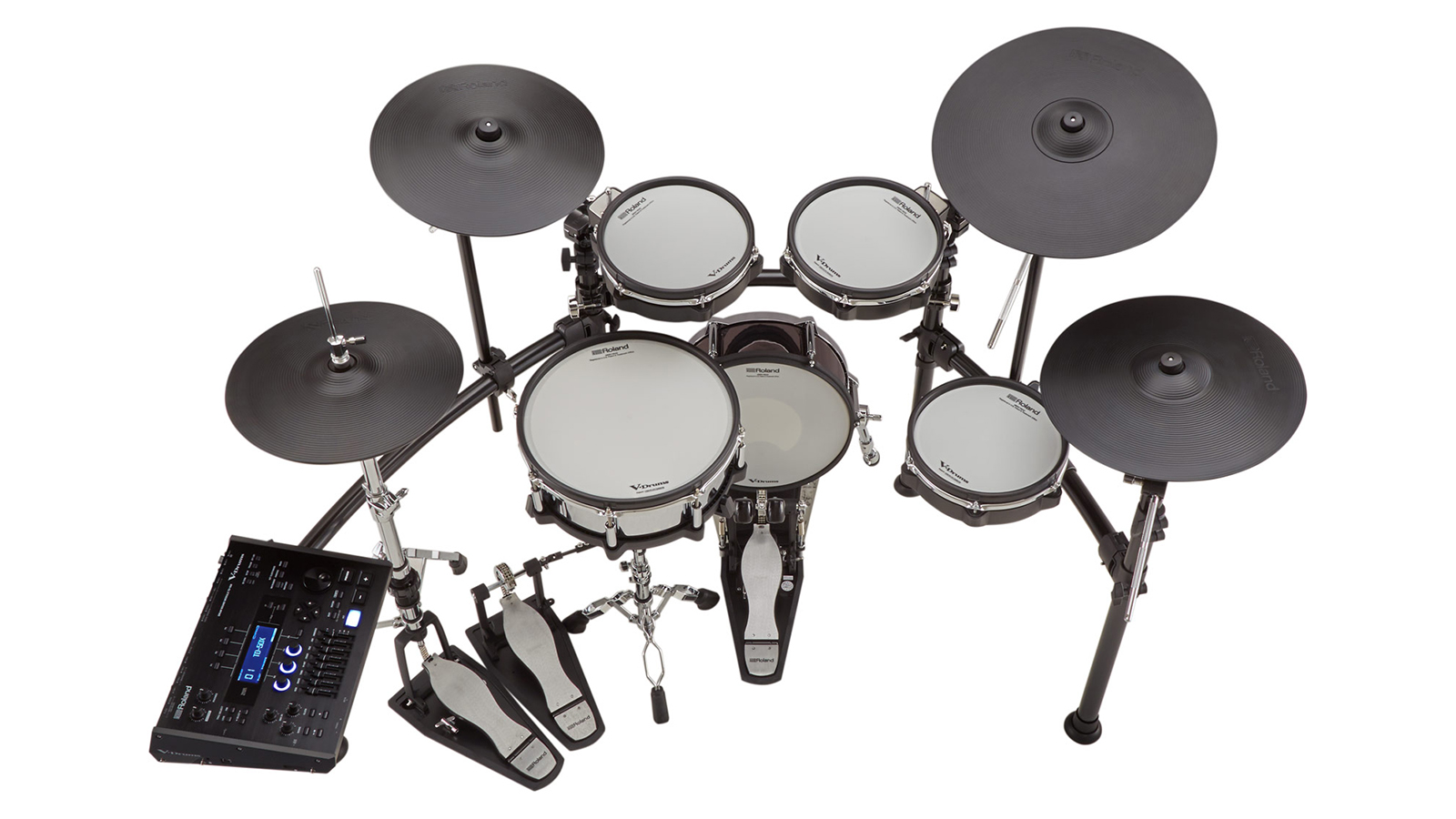
The hardware
Apparently, good things come to those who wait. Or as we remind ourselves as we open the TD-50K2: good things come to those who are tasked with assembling an electronic drum kit from a box. Armed with a pile of tubes and clamps, there’s no getting around the fact that building the stand is tedious, but you’ll only have to do it the once.
Once assembled, it’s sturdy, spacious. The rack tom toms mount directly to the middle vertical supports which does mean their horizontal positioning is essentially fixed, spanning most of the width of the horizontal support. But, there’s plenty of manoeuvrability for positioning them in terms of the playing angle thanks to an L-rod and ball joint.


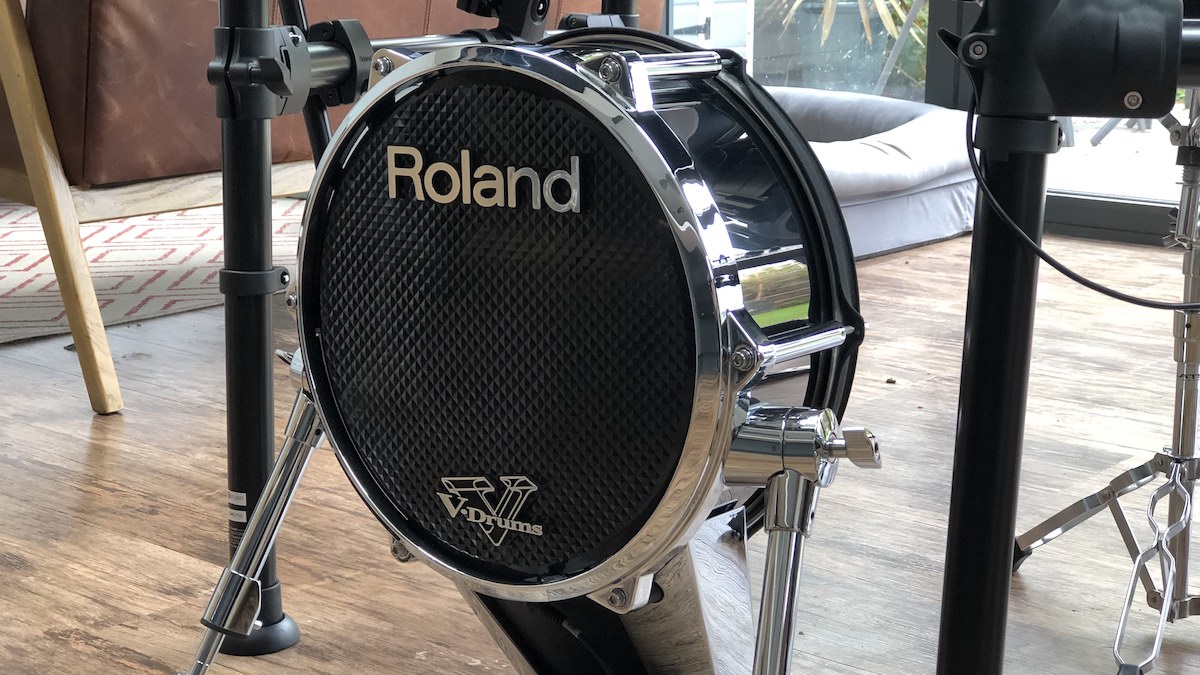

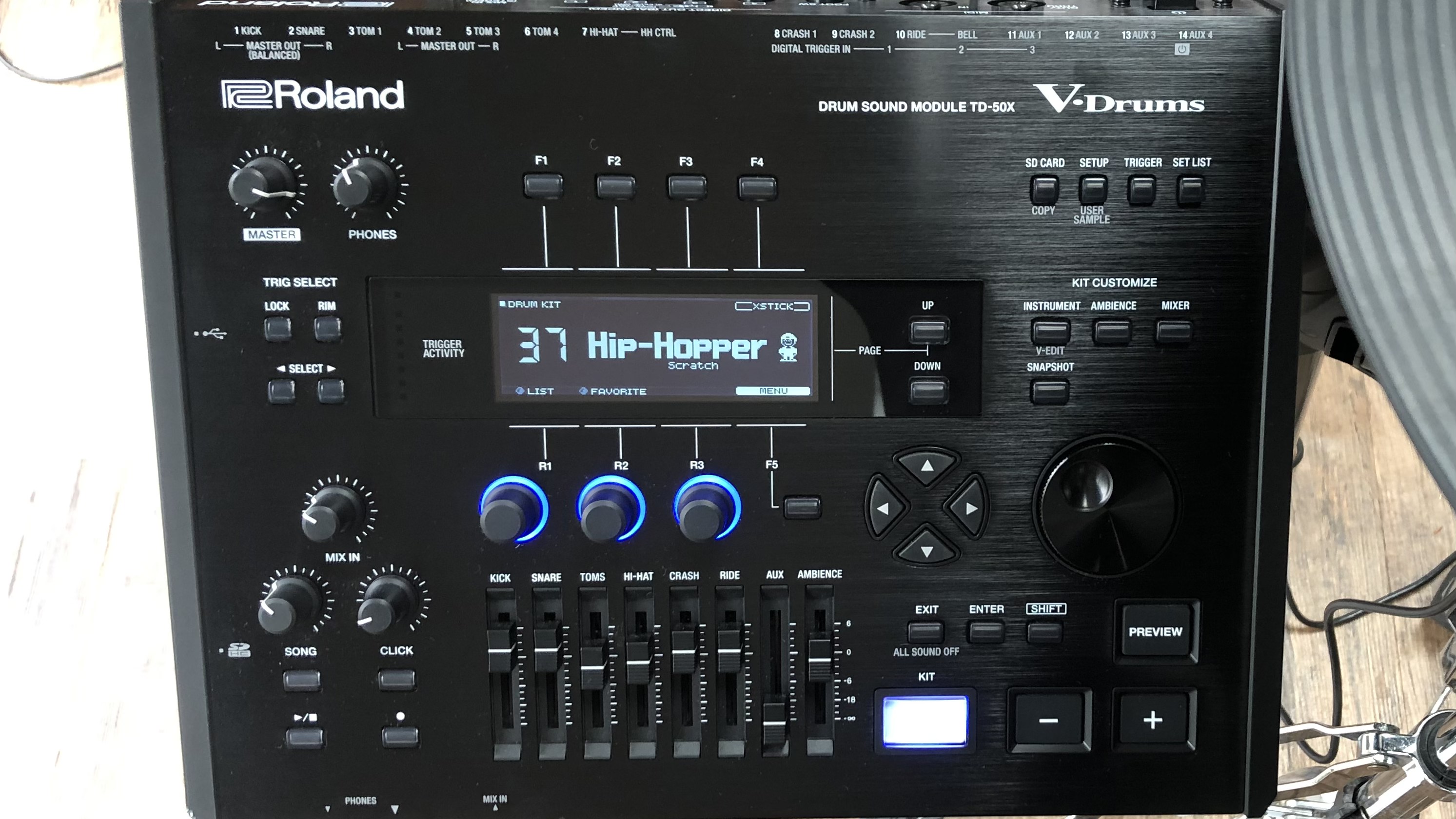
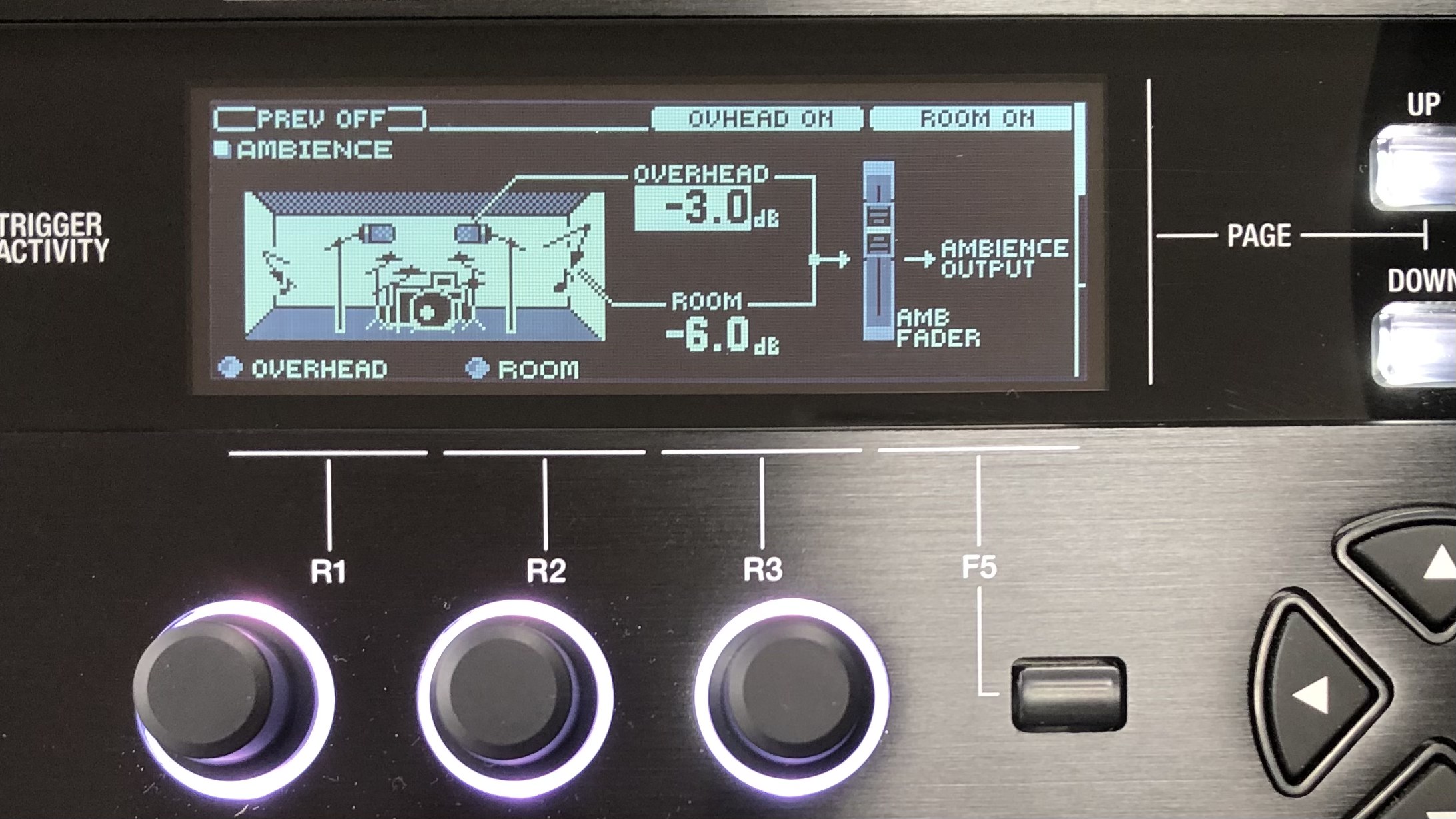
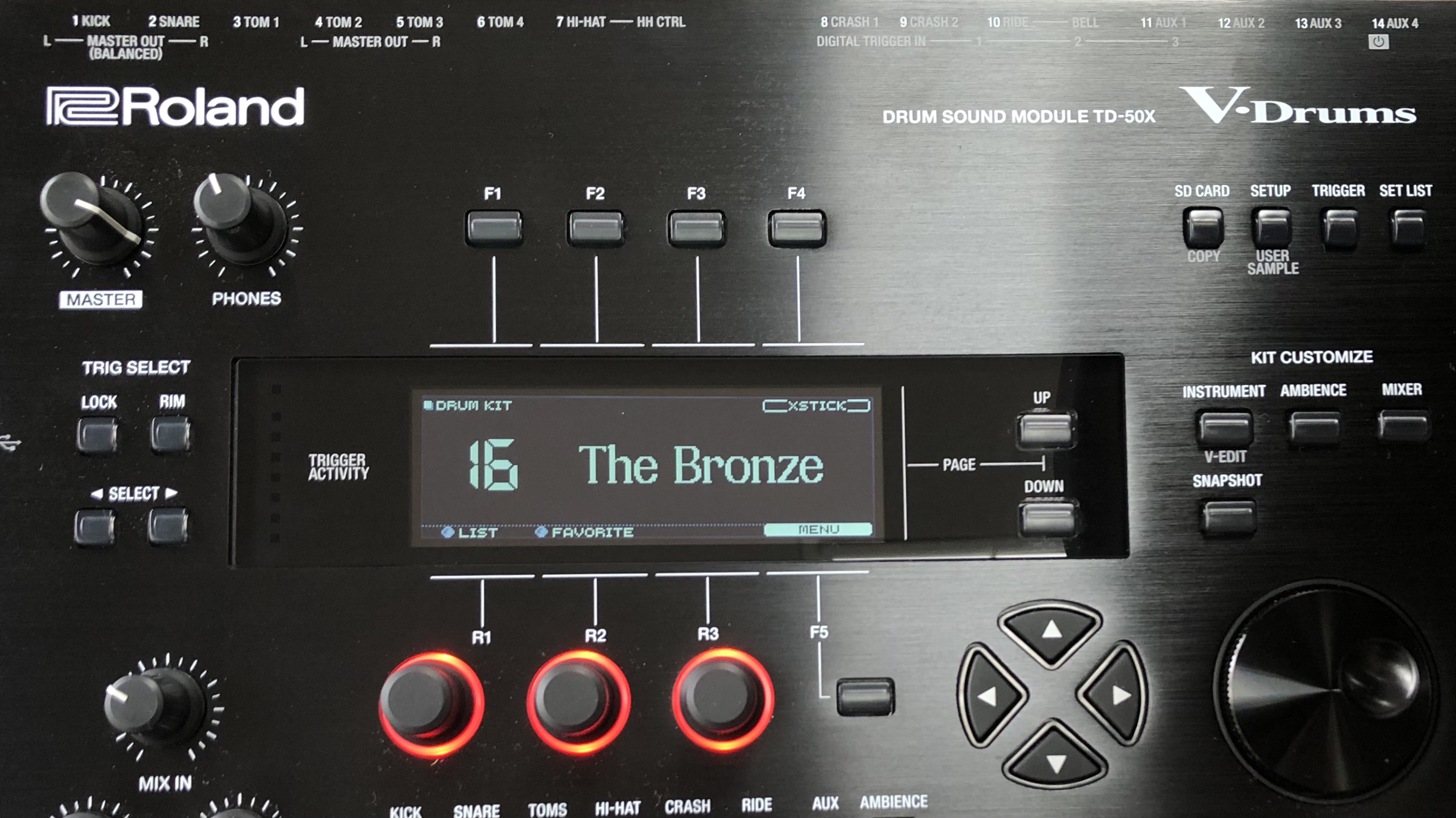
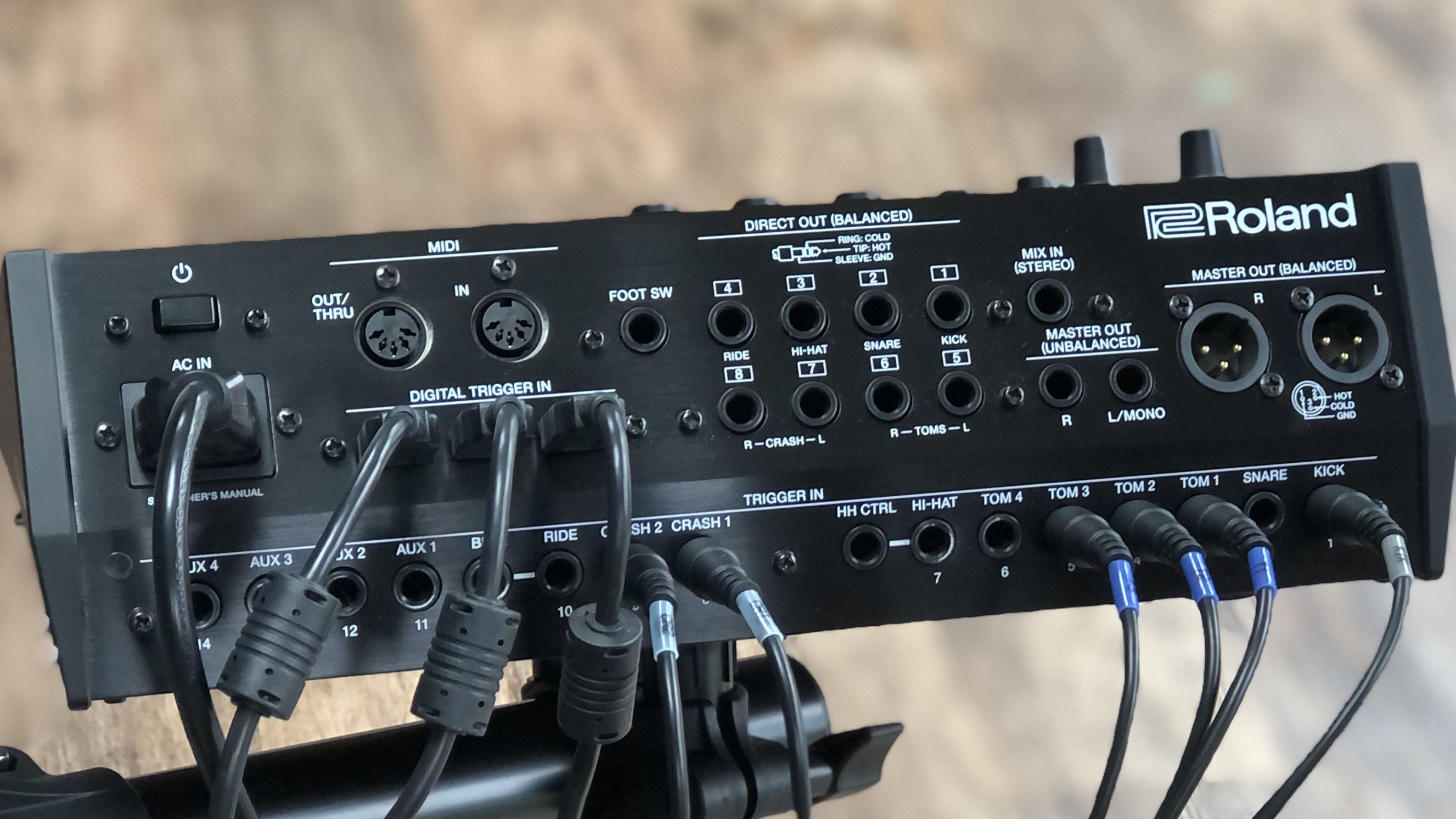
The more expensive TD-50KV2 comes with a KD-180, 18-inch bass drum, while the K2 is supplied with a KD-140 pad, with a diameter and depth which places it somewhere between a bass drum tower and a more authentic bass drum. But if you have any concerns, they’ll be quashed as soon as you take it out of the box. It’s a weighty lump of metal, clocking in at around 11kg. The spurs are the traditional bass drum kind, and there’s no creep, no side-to-side movement. Being a mesh-headed pad, you also get more control over the rebound of the pad, which is great if you’re used to a particular response, and as you can tell from the photos, there’s more than enough space for a double pedal. It’s solid, and definitely not to be confused with a smaller format bass drum tower.
The same applies to the PD-140DS, which is reassuringly heavy like a metal acoustic snare. Of course, these things don’t have a bearing on the sound, or even the actual triggering response, and it could be argued that they’re over-engineered, but what it does achieve is an almost subliminal enhancement of feel while playing.
What does make a difference, however, is the multi-positional sensing of the digital pads. Here, the snare drum, ride cymbal and now hi-hats are capable of even greater realism, mirrored with corresponding samples depending on the techniques you’re using.

In the case of the snare that adds up to natural transitions between playing at the edge of the head, the centre of the drum, rimshots and cross-sticks, the latter requiring no additional tweaking within the module to activate, unlike in some Roland modules. If you haven’t experienced it, it’s something of a revelation that takes buzz rolls and off-centre ghost notes firmly into the dynamic and responsive range of an acoustic snare drum.
When applied to the ride cymbal as it is here, the multi-sensing results in a greater resolution and more versatile response. The larger format means that mishits between the bell and bow zones are eradicated, plus you get the full swing of an acoustic cymbal - again increasing the realism, especially when crashing. The transition between zones is faultless and smooth, giving you natural-sounding crescendos making this the most dynamic electronic ride cymbal we’ve played.
Last, but definitely not least in the digital trio comes the VH-14D. As mentioned, these are a two-piece design, and while any of Roland’s acoustic stand-mounted hi-hats are a huge step up from a fixed cymbal pad and separate controller, the VH-14 is genuinely next-level.
The VH-14 hi-hat is genuinely next-level
First, despite the pads themselves being larger, they feel more nimble when compared to VH-10 or VH-13 hi-hats. This gives a pedal response when opening and closing - it’s fast and responsive when playing barks or semi-open parts.
But one of the key features once again here is the positional sensing. While at first you may think that hi-hat variations are largely performed by the pedal, what becomes apparent are the subtleties. Brilliantly, the pad and module can detect whether you’re playing on the left or right side of the hi-hat, so if you’re playing two-handed sixteenth notes it’ll trigger alternating samples for greater variation.
The positional sensing also works across the plane of the cymbal, in a similar way to the snare. Move closer to the bell and the module triggers appropriate samples which change in pitch and timbre to match. Just as with the CY-18DR, the VH-14D also allows for hand-muting/dampening, and as noted on our first look at the VH-14Ds, these features combined really do add an extra dimension to playing electronic hi-hats. Especially when combined with the TD-50X to unleash their full sound potential.
The sounds

Which brings us to the sounds themselves. Roland has gone a long way to offer plugin-style features to its more recent high-end modules and it’s based around its prismatic Sound Modelling. In a nutshell, that means multi-layered samples (rather than the same sound being filtered and increasing/decreasing with your strike velocities), actual room mic sounds, effects with studio-style parameters, editing and routing and more. The idea being that rather than a collection of drum sounds played back in isolation, we should get interactivity, complexity and a more organic sound from the acoustic drum samples within the module.
It’s a tall order, given that software drum libraries in 2022 are totalling above 100GB of data with a huge amount of processing power on hand to further tweak sounds. But there does come a point of diminishing returns, and it’s not just about a hard drive count.
With the fresh samples inside the TD-50X Roland has delivered plenty of character and variety. Snares range from papery to big and fat to sharp and cutting, and it’s the same story across the pallet of sounds. To our ears, there’s less of the over-hyped, sampled and processed ‘Rock Kit 01’ flavour we’re used to from electronic kit presets, in favour of a much more nuanced and realistic sound set.
This is heightened even more when you factor in the sample import capabilities. Yes, it’s limited, and on the face of it, it seems almost tokenistic to offer a single layer of user samples per-zone, especially when compared to the aforementioned software rivals.
But the devil is in the details, and by making use of the TD-50X’s playback and layering options it’s possible to implement a much more intelligent use of custom samples than neanderthal one shots. It’s actually quite surprising to hear just how far a single .wav file can stretch when combined with the dynamics of the internal sounds and layering/switching allowed by the module. Is it easy? Not exactly, you’ll need a good set of samples, ears to match and some time to really get your head into the operation of the TD-50X, but it’s absolutely possible. Indeed, there are plenty of third parties creating custom kits by doing exactly this.
The upper end of the electronic drum set market used to be less dense, but it’s fast becoming busy - partially by Roland’s own contributions. This all translates to choice, though. More than ever this level of outlay is a big commitment, both in terms of finances and time. As the gear becomes more sophisticated, so the learning curve gets steeper, and hopefully the end result is a better, more enjoyable playing experience that’ll keep you coming back.
The TD-50K2 delivers this in spades. It’s compact without being cramped, delivers the best sounds and features Roland has to offer, and checks all the right boxes in terms of playability. Not everyone wants a full shell setup, nor do they want to be tethered to a computer. We think it’s the one to go for if you’re after the TD-50 ‘2’ series features, without the extra outlay.
Roland TD-50K2 review: Hands-on demos
Roland
Sweetwater
Dan Kerby
Roland TD-50K2 review: Specifications
- Module: TD-50X
- Pads: KD-140 BC bass drum, PD-140DS snare drum, 3x PDX-100 tom pads, VH-14D hi-hats, CY-18DR ride cymbal, CY-14T and CY16T crash cymbals
- Stand: MDS-GND2
- Connectivity: MIDI in/out, TRS trigger inputs x14, 3x digital trigger inputs, Master L/R out x2, USB audio/data, direct outputs x8, mix input, SD card slot
- Audio interface: Yes, 32-channel
- Roland TD-50K2 review: Roland

Stuart has been working for guitar publications since 2008, beginning his career as Reviews Editor for Total Guitar before becoming Editor for six years. During this time, he and the team brought the magazine into the modern age with digital editions, a Youtube channel and the Apple chart-bothering Total Guitar Podcast. Stuart has also served as a freelance writer for Guitar World, Guitarist and MusicRadar reviewing hundreds of products spanning everything from acoustic guitars to valve amps, modelers and plugins. When not spouting his opinions on the best new gear, Stuart has been reminded on many occasions that the 'never meet your heroes' rule is entirely wrong, clocking-up interviews with the likes of Eddie Van Halen, Foo Fighters, Green Day and many, many more.
